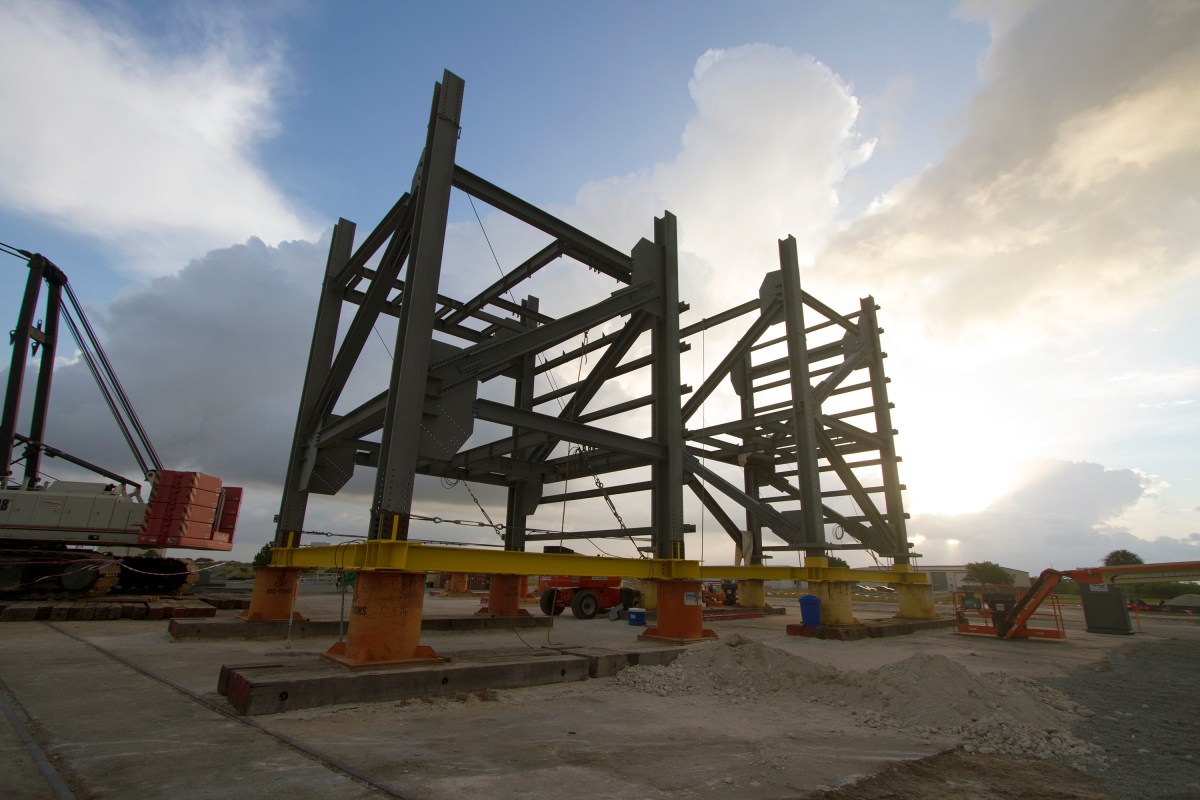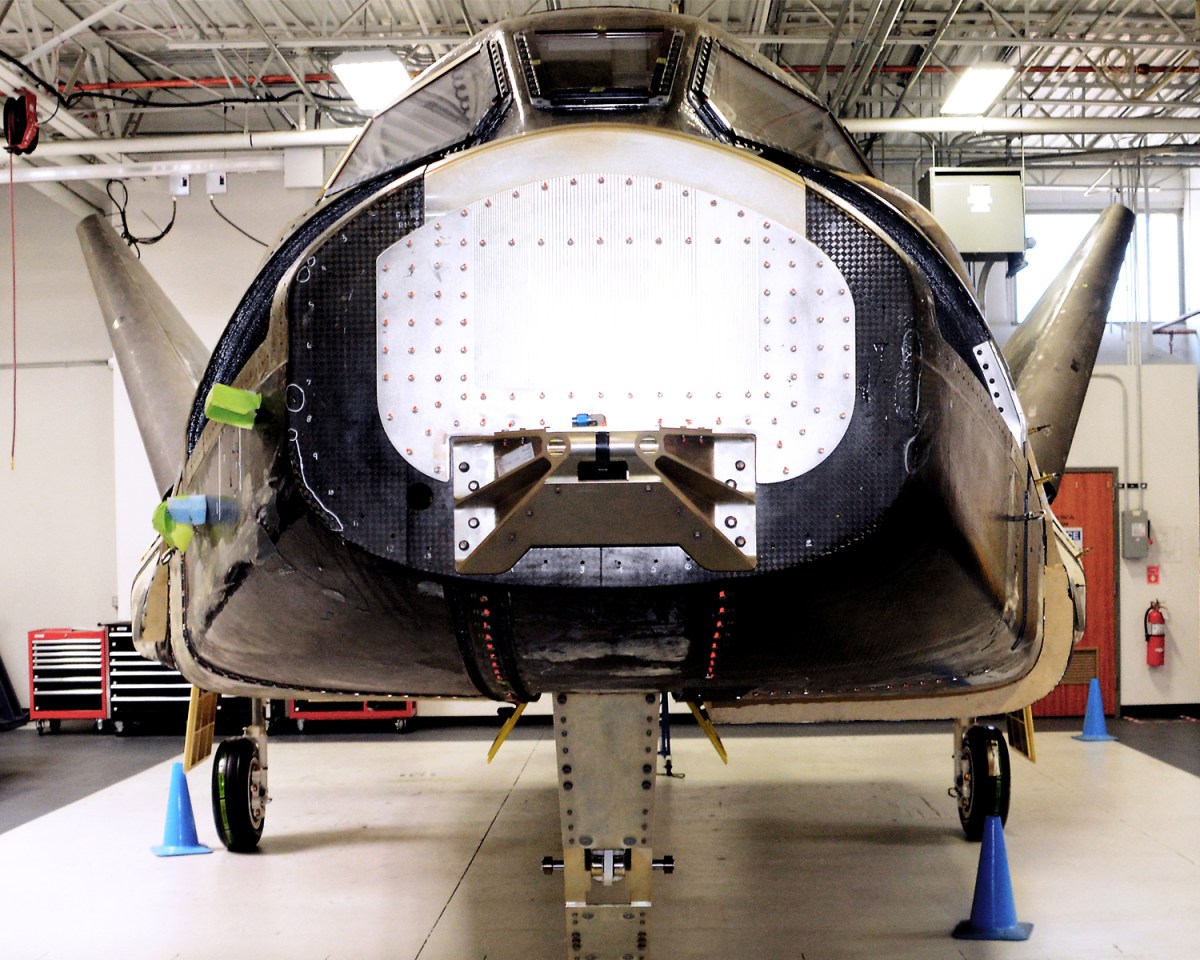 By Steven Siceloff,
By Steven Siceloff,
NASA’s Kennedy Space Center, Fla.
Heat shield tiles are getting stronger to make the next generation of American spacecraft safer as they experience searing heat and plasma on their way back into Earth’s atmosphere for landing.
The Thermal Protection System Facility is equipped with a variety of specialized tools to produce the precise tile shapes unique to each spacecraft’s design. For the first time since 2011, about 75 media and social media representatives toured the workshop and got a glimpse into how tiles are developed. Demonstrations also were performed, such as how waterproofing tiles protects spacecraft from rain, sleet and snow.
 Tiles developed in the facility were used on NASA’s Orion spacecraft, which performed its first flight test in December 2014. Data obtained about the thermal protection system during the flight test will help engineers refine the spacecraft’s system ahead of its first uncrewed flight, Exploration Mission-1, and first crewed mission to orbit around the moon in the 2020s, preparing NASA for longer journeys to Mars.
Tiles developed in the facility were used on NASA’s Orion spacecraft, which performed its first flight test in December 2014. Data obtained about the thermal protection system during the flight test will help engineers refine the spacecraft’s system ahead of its first uncrewed flight, Exploration Mission-1, and first crewed mission to orbit around the moon in the 2020s, preparing NASA for longer journeys to Mars.
Jacobs Technology engineers are producing test samples that will be used to protect the Dream Chaser spacecraft under development by Sierra Nevada Corporation (SNC) in partnership with the agency’s Commercial Crew Program. The facility is the same workshop that produced space shuttle heat shield tiles at NASA’s Kennedy Space Center for more than 30 years.
SNC continues to advance its development of the reusable Dream Chaser spacecraft that launches vertically atop a United Launch Alliance Atlas V rocket and returns to Earth for a runway landing. Like the shuttle, the Dream Chaser will use several kinds of protective materials on the outside of the spacecraft to form a protective barrier. Tiles made from improved silica-based blocks will make up most of the belly and upper portion of the heat shield, while a new material developed at NASA’s Ames Research Center called “TUFROC” will cover the nose and leading edges. Those are the surfaces that must resist and mitigate the highest temperatures the spacecraft experiences from the friction of re-entering Earth’s atmosphere. Another factor that makes the tiles desirable for a heat shield: they are mostly air. As a result, the tiles are extremely lightweight, a vital factor for spacecraft design in which weight is the primary driver of launch costs.
At first glance, the white blocks with a Styrofoam texture look no different than the thousands of blocks made for the space shuttle heat shields before being coated with a black ceramic material. But these new blocks incorporate advanced materials, making them stronger while maintaining the capability to prevent searing plasma from jeopardizing a spacecraft or its crew during the hazardous phase of a mission as the crew returns from orbit through Earth’s atmosphere on the way to a landing.
The nose skid of the Dream Chaser currently is outfitted with thermal protection system tiles to assess performance in preparation for a free-flight test of the spacecraft at the agency’s Armstrong Flight Research Center targeted for later this year.






 Engineers recently timed an MRAP armored vehicle for potential launch pad evacuation routes as preparations for Commercial Crew flights move ahead. The 45,000-pound MRAP is a great improvement over the M113 used during the space shuttle era in many regards. Larger and more powerful, the MRAP offers a mobile bunker to astronauts and ground crews in the unlikely event they have to get away from the launch pad quickly in an emergency.
Engineers recently timed an MRAP armored vehicle for potential launch pad evacuation routes as preparations for Commercial Crew flights move ahead. The 45,000-pound MRAP is a great improvement over the M113 used during the space shuttle era in many regards. Larger and more powerful, the MRAP offers a mobile bunker to astronauts and ground crews in the unlikely event they have to get away from the launch pad quickly in an emergency. 


 The two spacecraft under development by Commercial Crew providers Boeing and SpaceX are destined for the International Space Station, orbiting more than 250 miles above Earth. Astronauts will fly inside the Boeing CST-100 and SpaceX Crew Dragon spacecraft to reach the station where they will conduct research off the Earth, for the Earth. Both the CST-100 and Crew Dragon will fly into space aboard rockets certified to safely carry astronauts to low-Earth orbit.
The two spacecraft under development by Commercial Crew providers Boeing and SpaceX are destined for the International Space Station, orbiting more than 250 miles above Earth. Astronauts will fly inside the Boeing CST-100 and SpaceX Crew Dragon spacecraft to reach the station where they will conduct research off the Earth, for the Earth. Both the CST-100 and Crew Dragon will fly into space aboard rockets certified to safely carry astronauts to low-Earth orbit.

 SpaceX released a new photo showing the progress the company is making on an assembly hangar at Kennedy’s historic Launch Complex 39A. The company says the building will be big enough to house five Falcon rockets at once. The launch pad is being outfitted for missions by the Falcon Heavy and for Commercial Crew flights using the Falcon 9 rocket launching Crew Dragons to the International Space Station with NASA astronauts onboard.
SpaceX released a new photo showing the progress the company is making on an assembly hangar at Kennedy’s historic Launch Complex 39A. The company says the building will be big enough to house five Falcon rockets at once. The launch pad is being outfitted for missions by the Falcon Heavy and for Commercial Crew flights using the Falcon 9 rocket launching Crew Dragons to the International Space Station with NASA astronauts onboard.